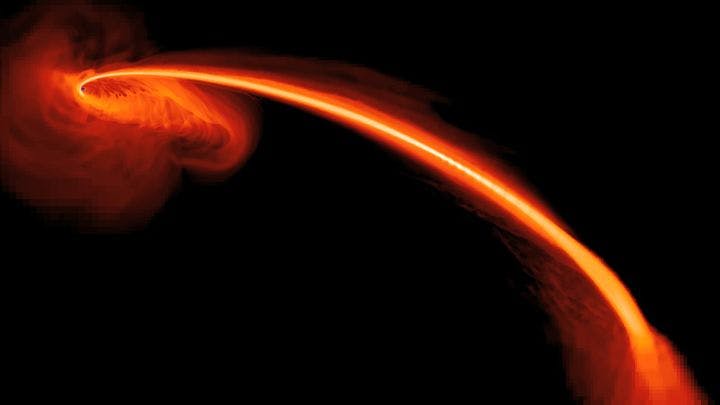Fall 2008
The Arrow of Time
– The Wilson Quarterly
Does time run backward in other universes? It would match the symmetry of many other aspects of our physics.
The mysteries of black holes and supernovas notwithstanding, the universe on the whole is a law-abiding place. From galaxies of stars to the tiny particles that constitute atoms, objects interact with each other according to rules that scientists think they understand. But one aspect of the universe has them baffled. That component is time.
There is a satisfying symmetry to the physical universe. For every action there is an equal and opposite reaction; for every negatively charged electron there is (presumably, somewhere) a positively charged positron. But time marches on in only one direction. One way of looking at this idea is that it is the stuff of the Back to the Future movies: It’s fun to think about traveling to the past, but you can’t actually do it. And entropy—randomness or disorder—tends to increase with time. That’s the second law of thermodynamics. So the universe has been steadily growing more disorderly. When you add milk to your coffee, the milk spreads randomly throughout the cup; it doesn’t spontaneously separate into a layer on top. Humpty Dumpty didn’t suddenly reassemble himself; not even all the king’s horses and all the king’s men could put him together again.
But why should time go in only one direction? If the universe is otherwise symmetrical, what’s so special about time? Sean M. Carroll, a senior research associate in physics at the California Institute of Technology, offers one possibility: Maybe, just maybe, ours is not the only universe there is. Maybe a big bang of the sort that is thought to have given birth to our universe happens every now and then. And maybe the arrow of time points in our direction (that is, toward the “future”) in half the universes and in the opposite direction (toward the “past”) in the other half. What if “we see only a tiny patch of the big picture, and this larger arena is fully time symmetric?” Carroll asks.
Not to worry, he says. In a universe in which the “past” was the “future,” people wouldn’t be born old and die as infants. In the confines of their universe, everything would proceed as in ours. It is only when they compared their universe to ours that anything would seem unusual. And each universe would be entirely separate and unknowable to denizens of the other. Carroll can probably never be proved right or wrong. Regardless, the fact that milk spreads randomly through your coffee is another way of saying that time is always going in one direction, at least in this universe. In Carroll’s formulation, it takes the existence of a parallel universe to preserve the symmetry of time, and the evidence comes from something no more elaborate than a cuppa joe.
* * *
THE SOURCE: “Does Time Run Backward in Other Universes?” by Sean M. Carroll, in Scientific American, June 2008.
Photo courtesy of NASA
